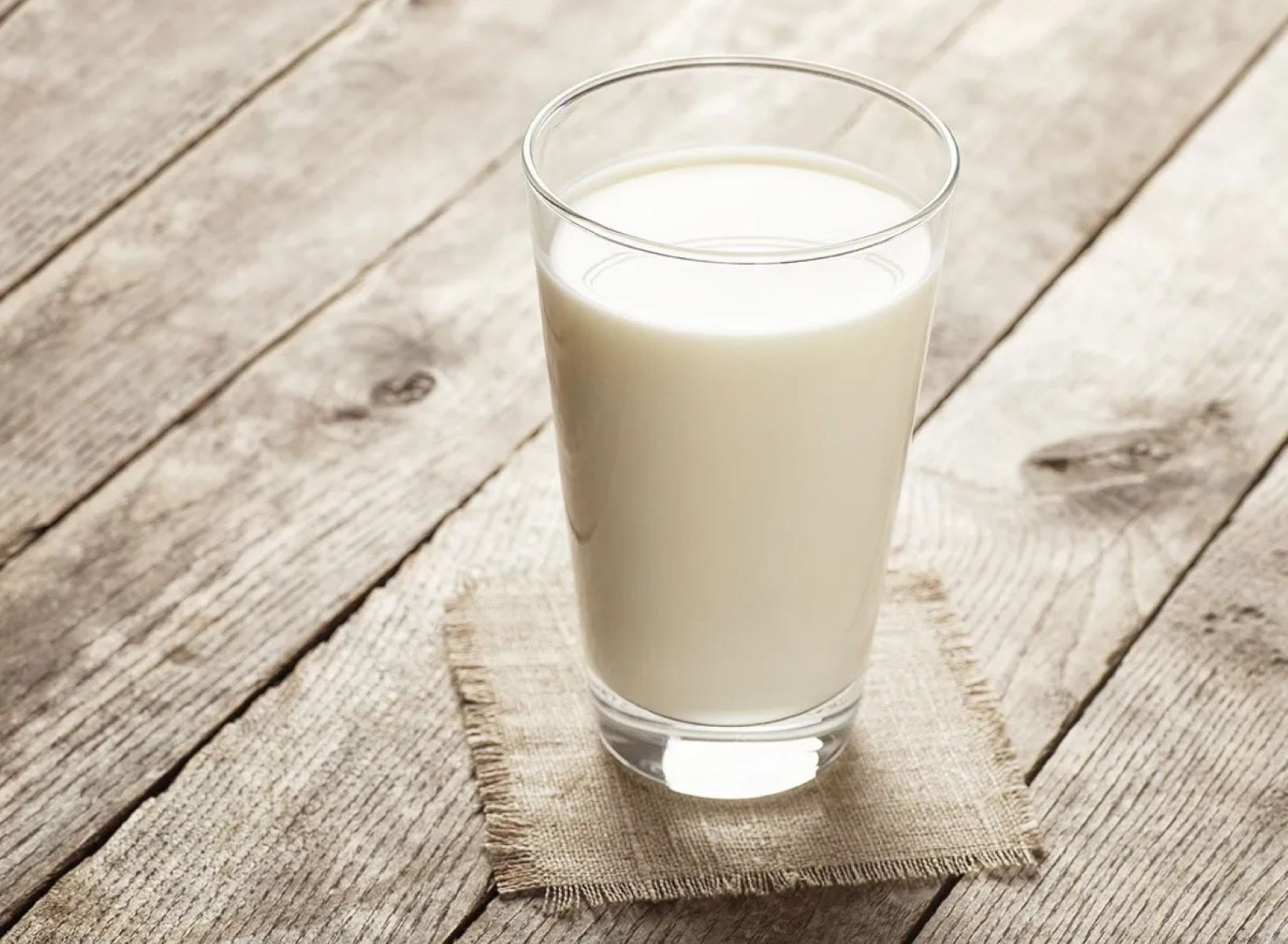Home>Furniture & Design>Interior Design Trends>How Many Calories Is A Glass Of Pinot Noir


Interior Design Trends
How Many Calories Is A Glass Of Pinot Noir
Published: February 3, 2024
Discover the calorie count of a glass of Pinot Noir and stay updated on the latest interior design trends. Explore the perfect balance of wine and home decor.
(Many of the links in this article redirect to a specific reviewed product. Your purchase of these products through affiliate links helps to generate commission for Storables.com, at no extra cost. Learn more)
Introduction
When it comes to enjoying a glass of wine, many factors come into play, from the grape variety to the winemaking process. Among the diverse selection of wines, Pinot Noir stands out as a beloved choice for enthusiasts and casual drinkers alike. Its delicate flavors, ranging from cherry and raspberry to earthy undertones, make it a versatile and enjoyable option for various occasions.
In this article, we delve into the world of Pinot Noir, exploring its caloric content and shedding light on the factors that influence it. Whether you're savoring a glass of this renowned red wine at a social gathering or simply unwinding after a long day, understanding its caloric implications can provide valuable insights into your overall dietary choices.
Join us as we uncover the nuances of Pinot Noir, from its distinct characteristics to the impact of serving size and alcohol content on its caloric value. By the end of this exploration, you'll have a deeper appreciation for this esteemed varietal and a clearer understanding of its place in your lifestyle. Let's embark on this journey into the world of Pinot Noir and uncover the secrets behind its caloric composition.
Key Takeaways:
- Enjoying a 5-ounce glass of Pinot Noir typically contains around 121 calories, influenced by alcohol and sugar content. Moderation and mindful portion control are key for a balanced approach to consumption.
- Pinot Noir’s potential health benefits, like antioxidants, should be enjoyed in moderation as part of a holistic lifestyle. Consider individual responses to alcohol and consult healthcare professionals for personalized guidance.
Read more: How Many Carbs Is A Glass Of Pinot Noir?
Understanding Pinot Noir
Pinot Noir, often referred to as the "heartbreak grape," is a red wine grape variety known for its finicky nature and the challenges it presents to winemakers. Originating from the Burgundy region of France, Pinot Noir has gained global acclaim for its elegant and nuanced characteristics. The name "Pinot Noir" is derived from the French words for pine and black, aptly describing the grape's tightly clustered, pine cone-shaped bunches and dark-colored berries.
This grape variety is renowned for producing wines with a remarkable range of flavors and aromas, often displaying notes of red fruits such as cherry, cranberry, and raspberry. Additionally, Pinot Noir wines can exhibit earthy, floral, and spicy undertones, contributing to their complexity and allure. The delicate nature of Pinot Noir grapes makes them highly reflective of their terroir, showcasing the unique influence of soil, climate, and winemaking techniques on the final product.
Pinot Noir is celebrated for its light to medium body, low tannins, and vibrant acidity, making it a versatile and food-friendly wine. Its versatility extends to the winemaking process, as it can be crafted into various styles, including still, sparkling, and rosé wines. Whether enjoyed on its own or paired with a wide array of dishes, Pinot Noir offers a sensory journey that captivates the palate and stimulates the senses.
The allure of Pinot Noir lies in its ability to convey a sense of place and time, encapsulating the essence of the vineyard and the hands that nurtured the grapes. Its transparency and susceptibility to subtle nuances make it a favorite among wine enthusiasts seeking depth and expression in their glass. As a result, Pinot Noir has secured a place among the most revered and sought-after wines globally, embodying a harmonious balance of elegance, complexity, and finesse.
In the next section, we will delve into the caloric content of Pinot Noir, unraveling the nutritional aspects that contribute to its overall appeal and impact on dietary considerations. Join us as we uncover the factors that influence the caloric value of this esteemed wine, shedding light on its role in a balanced and mindful approach to consumption.
Caloric Content of Pinot Noir
Pinot Noir, like all wines, contains calories derived from its alcohol and sugar content. Understanding the caloric implications of this beloved varietal is crucial for individuals mindful of their dietary intake. A standard 5-ounce serving of Pinot Noir typically contains approximately 121 calories. However, it's important to note that the caloric content can vary slightly based on factors such as alcohol by volume (ABV) and residual sugar levels.
The alcohol content of Pinot Noir plays a significant role in its caloric value. With an average ABV ranging from 13% to 14.5%, this wine falls within the moderate alcohol category. Alcohol contributes to the overall caloric content of wine, with each gram of alcohol providing approximately 7 calories. As such, the higher the alcohol content, the greater the caloric density of the wine.
In addition to alcohol, residual sugar levels can impact the caloric content of Pinot Noir. While Pinot Noir is generally known for its low to medium levels of residual sugar, variations in winemaking styles and regional influences can lead to slight differences in sugar content. It's essential to consider these nuances when evaluating the overall caloric impact of a specific bottle of Pinot Noir.
Despite its caloric content, Pinot Noir offers potential health benefits when consumed in moderation. The presence of antioxidants, such as resveratrol, in red wine has been linked to various health advantages, including potential cardiovascular benefits. However, it's crucial to maintain a balanced approach to consumption and consider the overall dietary context when incorporating Pinot Noir into a lifestyle.
As we continue our exploration of the caloric aspects of Pinot Noir, it's important to recognize the significance of serving size. While a standard serving is 5 ounces, variations in portion sizes can directly influence caloric intake. Being mindful of serving sizes and practicing moderation are essential considerations for individuals seeking to enjoy Pinot Noir while managing their overall caloric consumption.
In the following section, we will delve into the factors that influence the caloric content of Pinot Noir, shedding light on the dynamic interplay of elements that contribute to its overall nutritional profile. Join us as we uncover the multifaceted nature of Pinot Noir and its role in a balanced and mindful approach to dietary choices.
A 5 oz glass of Pinot Noir typically contains around 120-130 calories. Keep in mind that the actual calorie count can vary depending on the specific brand and alcohol content.
Factors Affecting Caloric Content
The caloric content of Pinot Noir is influenced by several key factors, each contributing to the overall nutritional profile of this esteemed wine. Understanding these elements is essential for individuals seeking to make informed dietary choices and maintain a balanced approach to consumption.
-
Alcohol by Volume (ABV): The alcohol content of Pinot Noir plays a pivotal role in determining its caloric density. With an average ABV ranging from 13% to 14.5%, this wine falls within the moderate alcohol category. Alcohol contributes significantly to the overall caloric content of wine, with each gram of alcohol providing approximately 7 calories. As a result, variations in ABV levels can directly impact the caloric value of a serving of Pinot Noir. Wines with higher alcohol content will inherently have a greater caloric density, emphasizing the importance of considering ABV when evaluating the nutritional aspects of Pinot Noir.
-
Residual Sugar Levels: While Pinot Noir is generally known for its low to medium levels of residual sugar, variations in winemaking styles and regional influences can lead to slight differences in sugar content. The presence of residual sugar contributes to the overall sweetness of the wine and can influence its caloric content. Although the impact of residual sugar on the caloric value of Pinot Noir may be relatively modest compared to that of alcohol, it remains a noteworthy factor to consider, particularly for individuals monitoring their sugar intake.
-
Serving Size: The serving size of Pinot Noir directly affects caloric intake. A standard serving of wine is typically defined as 5 ounces, containing approximately 121 calories for Pinot Noir. However, variations in portion sizes can significantly alter caloric consumption. Larger servings will naturally result in higher caloric intake, emphasizing the importance of mindful portion control. Being cognizant of serving sizes and practicing moderation are essential considerations for individuals seeking to enjoy Pinot Noir while managing their overall caloric consumption.
-
Winemaking Techniques: The winemaking process, including factors such as oak aging and blending, can influence the caloric content of Pinot Noir. For example, wines subjected to extended oak aging may exhibit slightly higher caloric values due to the potential extraction of compounds from the oak barrels. Similarly, blends incorporating other grape varieties may display variations in caloric density. Understanding the winemaking techniques employed can provide insights into the potential nuances in the caloric content of a specific bottle of Pinot Noir.
By considering these factors, individuals can gain a comprehensive understanding of the dynamic interplay of elements that contribute to the caloric content of Pinot Noir. This knowledge empowers informed decision-making, enabling individuals to savor this esteemed wine while maintaining a mindful approach to their overall dietary choices.
Health Considerations
When exploring the caloric content of Pinot Noir, it's essential to consider the broader health implications associated with its consumption. While the focus often centers on the caloric aspect, understanding the potential health considerations of enjoying this esteemed wine is crucial for individuals seeking a balanced and mindful approach to their overall well-being.
Moderation is key when incorporating Pinot Noir into a lifestyle. The concept of moderation extends beyond caloric intake and encompasses various health-related factors. When consumed in moderation, red wine, including Pinot Noir, has been associated with potential health benefits. The presence of antioxidants, particularly resveratrol, in red wine has garnered attention for its possible cardiovascular advantages. Resveratrol, found in the skins of grapes, has been the subject of scientific research exploring its potential role in promoting heart health and overall well-being.
It's important to note that while the presence of antioxidants in red wine is a notable consideration, their potential benefits should be viewed within the context of an overall healthy lifestyle. Incorporating a diverse range of nutrient-dense foods, engaging in regular physical activity, and maintaining a balanced approach to dietary choices are fundamental aspects of promoting well-being. Viewing the consumption of Pinot Noir as part of a holistic lifestyle approach allows individuals to appreciate its potential health-related attributes while considering the broader spectrum of wellness factors.
Furthermore, the impact of alcohol consumption on individual health should be carefully considered. While moderate red wine consumption has been linked to potential health advantages, excessive alcohol intake can have adverse effects on health and well-being. Understanding and adhering to recommended guidelines for moderate alcohol consumption is essential for individuals incorporating Pinot Noir into their lifestyle.
In addition to the potential health benefits associated with moderate red wine consumption, it's important to recognize that individual responses to alcohol and dietary components can vary. Factors such as genetics, overall dietary patterns, and existing health conditions can influence how the body processes and responds to the consumption of red wine, including Pinot Noir. As such, individuals are encouraged to consult with healthcare professionals to gain personalized insights into how wine consumption aligns with their individual health considerations.
By acknowledging the potential health considerations associated with enjoying Pinot Noir, individuals can approach its consumption with a balanced and informed perspective. Embracing moderation, considering the broader spectrum of wellness factors, and seeking personalized guidance contribute to a holistic approach to incorporating this esteemed wine into a mindful and health-conscious lifestyle.
Read more: How Many Calories Is A Glass Of Pinot Grigio
Conclusion
In conclusion, the journey into the world of Pinot Noir has unveiled a tapestry of flavors, aromas, and nutritional considerations that enrich our understanding of this esteemed wine. From its delicate characteristics and nuanced profile to the factors influencing its caloric content, Pinot Noir stands as a testament to the artistry and complexity of winemaking. As we conclude our exploration, it becomes evident that Pinot Noir embodies a harmonious balance of sensory delight and mindful consumption.
The caloric content of Pinot Noir, averaging approximately 121 calories per standard 5-ounce serving, reflects the interplay of alcohol, residual sugar, and serving size. Understanding these elements empowers individuals to make informed dietary choices while savoring this renowned varietal. The influence of alcohol by volume and residual sugar levels underscores the dynamic nature of Pinot Noir's nutritional profile, emphasizing the importance of mindful consumption and portion control.
Furthermore, the potential health considerations associated with moderate red wine consumption, including the presence of antioxidants such as resveratrol, offer a broader perspective on the role of Pinot Noir in a balanced lifestyle. Embracing moderation and considering the holistic spectrum of wellness factors enables individuals to appreciate the potential health-related attributes of this esteemed wine while maintaining a mindful approach to overall well-being.
As we raise our glasses to the allure of Pinot Noir, it's essential to recognize the multifaceted nature of this wine and its ability to captivate the senses while prompting thoughtful reflection on dietary choices. Whether enjoyed as a standalone indulgence or paired with a diverse array of culinary delights, Pinot Noir invites us to savor each sip with a sense of appreciation for its rich heritage and the artistry that defines its character.
In the tapestry of wine culture, Pinot Noir emerges as a thread of elegance, complexity, and finesse, weaving its way into the hearts and palates of enthusiasts worldwide. Its caloric implications, health considerations, and sensory allure converge to form a narrative that transcends mere consumption, inviting us to embrace a mindful and holistic approach to enjoying this esteemed wine. As we conclude our exploration, let us raise our glasses to the timeless charm of Pinot Noir, celebrating its place in the mosaic of wine appreciation and mindful living.
Frequently Asked Questions about How Many Calories Is A Glass Of Pinot Noir
Was this page helpful?
At Storables.com, we guarantee accurate and reliable information. Our content, validated by Expert Board Contributors, is crafted following stringent Editorial Policies. We're committed to providing you with well-researched, expert-backed insights for all your informational needs.















0 thoughts on “How Many Calories Is A Glass Of Pinot Noir”